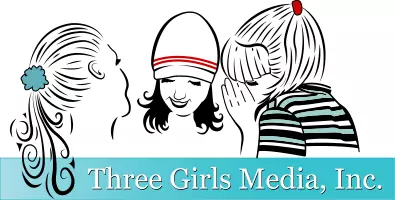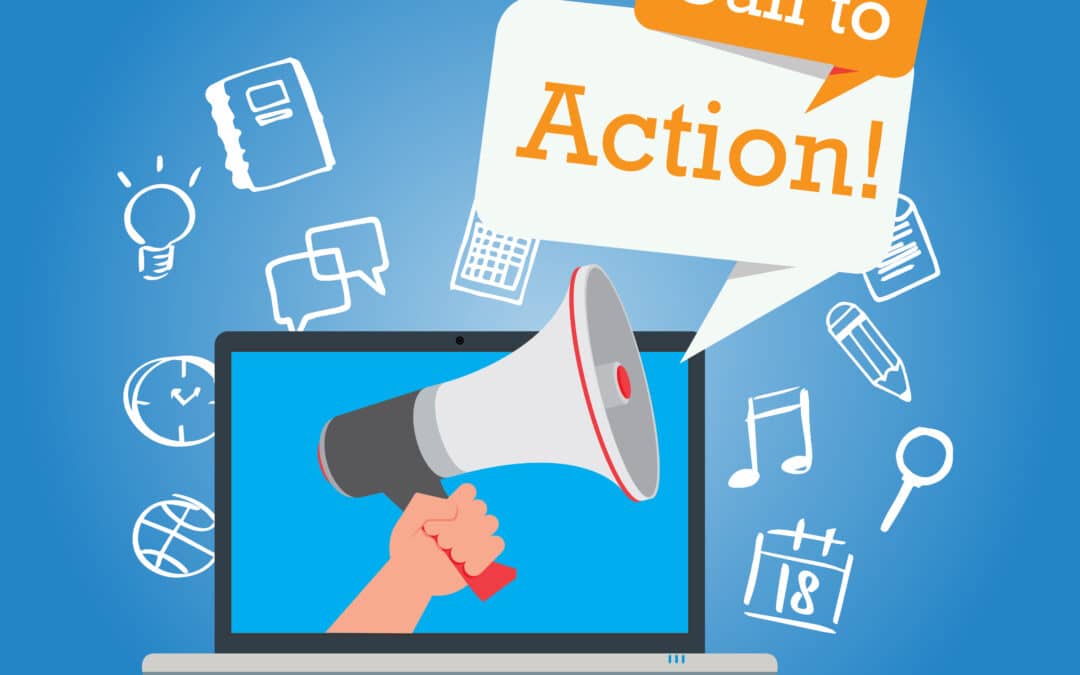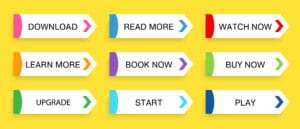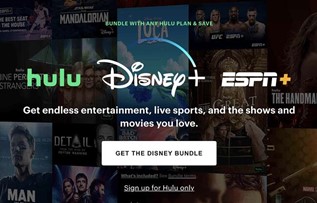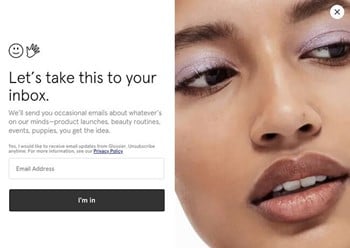A content marketer must consider an enormous number of concepts to include in their content daily. Keywords, search engine optimization (SEO), internal and outbound links, balancing promotional and nonpromotional content — it can all be overwhelming at times. As such, it’s not surprising that there are moments when a content marketer forgets something at some point in the process. One thing that shouldn’t be forgotten, however, is to include a call to action (CTA) in every piece of marketing content you create. In this article we discuss what a CTA is, why it’s important in content marketing, the different types of CTAs, how to craft effective calls to action and examples of highly successful CTAs from various business sectors.
What Is A CTA?
HubSpot tells us that a CTA is “the part of a webpage, advertisement, or piece of content that encourages the audience to do something. In marketing, CTAs help a business convert a visitor or reader into a lead for the sales team. CTAs can drive a variety of different actions depending on the content’s goal.” There are several ways to incorporate calls to action into your marketing, but the most common formats are to hyperlink text, insert a button that links to another page or (less commonly) the use of plain text with no link.
With the definition of a CTA in mind, why is it important to include one in a content marketing campaign? The answer to this is fairly simple. The main goal of most marketing campaigns is to guide your audience to eventually make some form of purchase. That being said, how will your audience know what they’re supposed to do unless you explicitly tell them? You may be thinking that your audience is smart enough to know what to do without you guiding them each step of the way. This may be true in theory, but consider the vast number of decisions that everyone, from teens to seniors, have to make in their daily lives. Making decisions can be extremely exhausting and mentally taxing at times. Why not make decision-making as easy as possible for your audience and increase conversions, profits, subscriptions, social reach or sales leads at the same time?
Different Types Of Calls To Action
There are many types of CTAs depending on what you want the consumer to do.
While the call to action in your content marketing will inevitably vary depending on the industry you’re in and the products or services you sell, there are some common tactics that are bound to work for audiences in every sector. HubSpot shares the following types of calls to action that will be useful and effective in your content marketing:
- Sign-up: A sign-up CTA is exactly what it sounds like. It invites the reader to sign up for something. This could be a free trial, and online course, an event or even a product.
- Subscribe: If you employ a subscribe call to action in your content marketing, instead of asking consumers to commit to purchasing something you are inviting them to receive various updates from your company. For example, your business could invite readers to subscribe to your weekly e-newsletter or blog.
- Try For Free: This type of CTA allows users to try out a product before deciding if it is something that is of value to them. Consumers love free stuff (who doesn’t?) and this is a great way to entice people to try out your product or service.
- Get Started: This could be an invite to sign up for something, try something for free or to purchase something. It prompts the reader to take the next step, whatever it may be.
- Learn More: This call to action gives your audience something more to learn about. The purpose could be to give them more information so they are better prepared to buy something from your business, or it could simply be a piece of information you think would be useful to your audience.
- Join Us: This CTA is particularly effective for companies whose products are built on collaboration with others. Nonprofits, for example, may use this call to action to invite readers to help them with something for the community.
The above calls to action all serve a clear purpose of telling their audience what to do next. While they are all worded differently and may have a variety of actions associated with them, they all function to invite their reader to perform some sort of action, whatever it may be.
How To Create A Call To Action In Content Marketing
Now that you understand the different types of content marketing calls to action, there is something far more essential to the process: the ability to craft clear, precise and engaging CTAs. Wordstream provides us with seven tips for creating calls to action guaranteed to hook your reader immediately.
- Use a strong command verb to start your CTA.
A call to action won’t be a long, drawn-out paragraph. You have limited time and space to directly get your point across to the reader. As such, get to the desired outcome — and do it quickly! Begin your CTA with the action you want the consumer to take. If you want your reader to buy something, use words like “buy,” “shop” or “order.” If you want them to request more information, use phrases such as “Fill out a form” or “Find out how.” Whatever you want them to do, tell them in the beginning of your CTA.
AdEspresso by Hootsuite breaks down different action words that can be used according to the industry you’re in or the content marketing format you’re using. Their suggestions are as follows:
“Ecommerce: Buy, shop, order, reserve, save, add to cart, pick, view
SaaS conversion: Try, get started, subscribe, sign up
Non-profit conversion: Donate, commit, volunteer, adopt, give, support
Newsletter: Subscribe, join, sign up, refer
Freebie: Download, get, grab, claim, take advantage of
General: Learn more, see more, see how, start, find out, check it out, click here, continue, swipe up”
- Use words that provoke emotion or enthusiasm.
Use words guaranteed to elicit a response in your call to action.
You will elicit a strong response from your audience if you use words that make them feel something. There are numerous words that can do this, but beyond words, one of the easiest ways to promote enthusiasm in your CTA is to add an exclamation point at the end. While you want to steer clear of using an exclamation point at the end of every sentence, using one in your content marketing at the end of your CTA is sure to encourage your audience to do something. Exclamation points tell your audience that they should be excited about what you have to offer.
- Give your audience a reason why they should take the desired action.
Your readers want to know what’s in it for them. What will your offer provide them that they don’t already have? By explicitly spelling out that what you are giving to your audience provides them value, they are more likely to take the action you have set for them.
- Take advantage of FOMO.
Fear of missing out (FOMO) is an extremely effective motivator. If your audience feels that they’ll miss out by not taking advantage of your opportunity, they’ll be more likely to quickly click on your offer. One of the best ways to do this is to indicate that the sale or promotion ends soon. Phrases like “While supplies last” or “Sale ends Monday” are guaranteed to provoke quick action. The key here is to make sure you follow through with what you have stated. You stand to lose the trust of your audience if you claimed that a sale was ending and then continue promoting it afterward.
- Know your devices.
It’s a good idea to customize your CTA based on the device being used by your audience. For example, someone searching for something on a smart phone is much more likely to complete a desired action quickly (when compared to someone searching on a desktop computer). As such, your ads that appear on mobile devices should include phrases such as “Call now to get started” or “Call us today for more information.” Since Google allows you to display your phone number alongside your ad, people on smartphones are likely to take advantage of this in the moment.
- Don’t be afraid to get creative.
Step outside of your comfort zone to reach your audience in your call to action.
If you find that your content marketing CTA isn’t drawing the response that you desire, don’t be afraid to step outside of the box a bit. Spice up your words and get creative. It may take some trial and error before you find what really works for your target audience. One way to jump-start ideas it to look at what other companies have done for their own CTAs. You won’t want to copy exactly what they have done, but oftentimes looking at what other people have used is a surefire way to create a spark in your own brain.
- Use numbers when possible.
Including some pricing information in your call to action is a tactic that may appeal to your target audience. Consumers like to know what they’re getting into before they commit to something (even something as simple as clicking on a button). An added bonus of using pricing in your CTA is that you know by the consumer clicking through that they are genuinely interested in your offer even after seeing the price. This gives you a much better chance of generating a conversion.
You obviously won’t be able to include every single tip in every single call to action you create, nor should you. But be aware of them so that when you do feel stuck you’re able to find a way to get your creative juices flowing again.
Examples Of Effective Content Marketing Calls To Action
Knowing how to create an effective CTA is one thing, but doing it day after day is another. Sometimes it can be difficult to brainstorm novel ways of doing things that will keep your audience engaged and interested in your brand. As mentioned previously, one thing that can help with this is to look at examples that other companies have used for their own calls to action. Looking at a quality piece of content marketing can aid in creating inspiration when you feel stuck in a creative rut.
HubSpot has a wealth of examples of effective calls to action in 2022 (50 in fact). Some of the best examples and why they work are as follows:
Why This CTA Works
This CTA comes halfway through the article and invites readers to download a free resource that is directly related to the topic of the article. If a reader has already made it through half of the article, they’re probably very interested in the topic being discussed. This makes it likely that once they finish reading the article, they’ll download the free materials to get started with market research of their own.
Why This CTA Works
This call to action by a personal financial educator is brilliant because of the language chosen. It is friendly, creative and feels personalized to the reader. Of particular interest is the way she has chosen to say, “Sign Up For Weekly Goodies!” instead of “Sign up for my weekly newsletter!” Weekly goodies sound much more enticing than a weekly newsletter, even if it means the exact same thing!
VRBO
Why This CTA Works
This simple example draws the reader in and enables them to picture themselves having an adventure with friends or family, just as those in the picture are. The use of people in the image instead of a house really helps the viewer to imagine themselves doing the same types of activities. Additionally, the wording “Discover your escape” is much more adventurous sounding than something like “Browse vacation homes now.” Words matter, especially when you’re attempting to grasp the attention of your audience quickly.
Why This CTA Works
The biggest reason that this call to action works is that it gives the reader the impression that they’re being provided something of value. Consumers aren’t just getting one streaming service, but three. This emphasis on a three-in-one bundle entices consumers, making them much more likely that they’ll click the Disney bundle button over the smaller link below for just Hulu.
Why This CTA Works
Sometimes consumers fear commitment, especially when there is money involved (who doesn’t, really). Netflix provides assurance by showing the audience that they’re willing to provide them with a month of service free (long enough to tell if they enjoy the service) and the words “cancel anytime” above them serve to remind the reader that they won’t get caught in a contract accidentally.
Why This CTA Works
The success of this CTA is due in large part to the phrasing they chose. “Let’s take this to your inbox” is clever wording and encourages the reader to learn more. Additionally, the use of “I’m in” on the button makes it sound like the consumer is joining some sort of exclusive club.
Creating calls to action in your content marketing may seem like it should be a fairly simple and easy process. And it is — except when you find yourself pressed to create new and creative ones all the time. Hopefully with the tips and examples provided above you’ll find yourself with a renewed sense of vision for your content marketing CTAs.
Do You Need Help With Your Content Marketing CTAs?
If you find yourself struggling to craft effective calls to action for your content marketing, we would love to help! Three Girls Media has a team of experienced content marketers who are extremely creative and adept at thinking outside the box. Contact us today for a complimentary, no-obligation 30-minute phone consultation with our CEO, Erika Taylor Montgomery, to see what we can do for you and your business.
Special Offer:
Sign up for a complimentary consultation during December and receive an Annual Marketing Planning Guide valued at $475! We offer a 30-minute phone consultation with our CEO, and can answer your questions and discuss your specific marketing needs - no strings attached. Call 408-218-2391 or contact us today to arrange your consultation!
